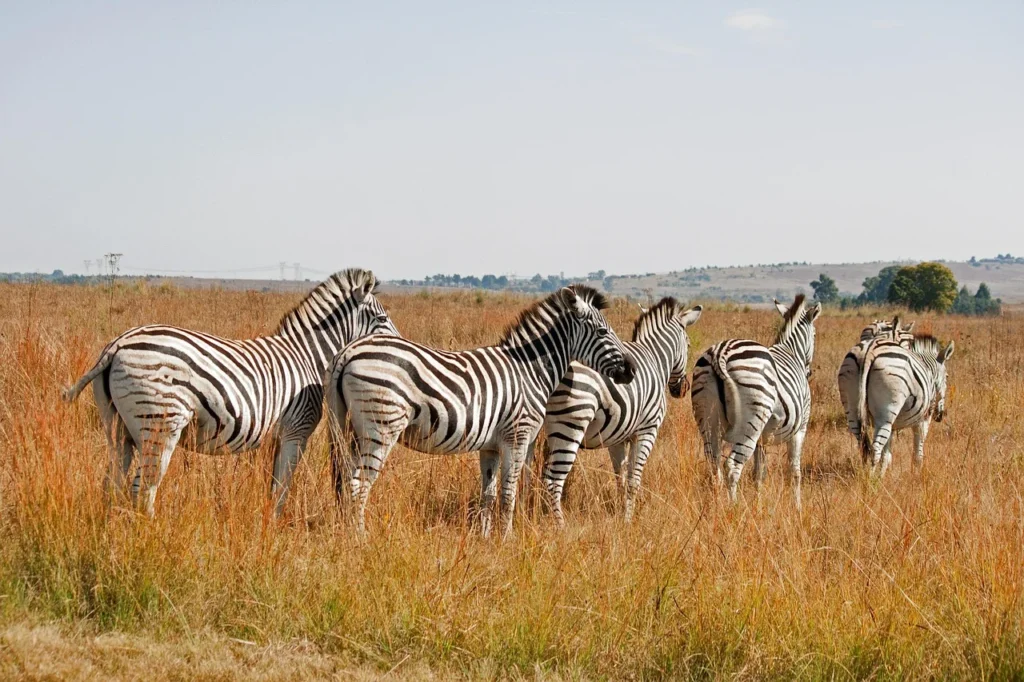Tanzania is a year-round destination blessed with diverse landscapes, rich wildlife, and distinct seasons that shape every traveler’s experience. From witnessing the Great Migration in the Serengeti to basking on Zanzibar’s sun-drenched beaches, the best time to visit Tanzania depends on your interests—be it wildlife photography, climbing Kilimanjaro, or a romantic beach escape.
Quick Summary: Best Time to Visit Tanzania
| Travel Goal | Best Time to Visit |
| Wildlife Safaris (All Parks) | June to October (Dry Season) |
| Wildebeest Migration (River Crossings) | July to September |
| Wildebeest Calving Season | January to February |
| Best Weather | June to October |
| Fewer Crowds & Lower Rates | April to May, November |
| Best Birdwatching | November to April (Migratory Birds) |
| Climbing Mount Kilimanjaro | January to March, June to October |
| Zanzibar Beach Holiday |
Tanzania Safari Seasons at a Glance
Dry Season (June to October): Prime Time for Tanzania Safaris
- Why it’s great: Dry conditions force wildlife to congregate around water sources, making them easier to spot. The skies are clear, with little to no rain and fewer mosquitoes.
- Highlights:
- Peak game viewing in Serengeti, Ngorongoro, Tarangire, Ruaha, Katavi, and Nyerere
- Best time for the Great Wildebeest Migration and Mara River crossings
- Comfortable temperatures during the day; cold mornings and nights
- High season crowds in popular northern parks like Serengeti and Ngorongoro
Continue your journey: This related article is worth your time.
��️ Wet Season (November to May): Lush Landscapes & Calving
- Green Season with vibrant scenery, dramatic skies, and excellent birdwatching
- January to March: Wildebeest calving season in the southern Serengeti—ideal for predator sightings
- April to May: Peak of the long rains; fewer visitors, lower prices, and limited lodge operations in southern and western parks
- November to December: Short rains with light afternoon showers, still great for safaris in northern parks
Month-by-Month Guide to Visiting Tanzania
January to March: Calving & Big Cat Action
- Best for: Witnessing the wildebeest calving season in the southern Serengeti. Around 500,000 calves are born in a matter of weeks, attracting predators and dramatic hunting scenes.
- Other Highlights:
- Great time for Kilimanjaro and Mount Meru treks
- Hot and humid on the coast—ideal for beach holidays
- Excellent visibility and predator activity
April & May: Lush, Quiet, and Budget-Friendly
- Considered the low season, with heavy rains (especially in April) and limited access to some remote areas
- Pros:
- Stunning landscapes and green scenery
- Fewer tourists and reduced rates on accommodations and tours
- Wildlife still active in northern parks like Serengeti, Ngorongoro, and Tarangire
June to August: Peak Safari Season Begins
- Dry season starts—safaris become exceptional as vegetation thins
- Migration movements:
- June: Wildebeest gather near the Grumeti River
- July-August: High chance of witnessing Mara River crossings
- Best time for:
- Classic game drivesKilimanjaro trekking
- Pairing Kenya & Tanzania safaris
- Visiting Zanzibar (dry, sunny weather)
September & October: Elephants, Chimpanzees & Climbing
- Still dry with fantastic wildlife sightings and fewer crowds than peak July–August
- Notable experiences:
- Massive elephant herds in Tarangire
- Chimpanzee trekking in Mahale Mountains
- Kilimanjaro climbing in mild, clear conditions
- Fishing season begins in the great lakes
November & December: Short Rains & Hidden Gems
- Short rains arrive, but usually in the form of brief afternoon showers
- Why go?
- Green, scenic landscapes with beautiful light for photography
- Start of bird migration season—excellent for birdwatchers
- Wildebeest herds return to the southern Serengeti by December
- Quiet beaches and lush tropical scenery in Zanzibar
- Mid-December holidays attract more travelers
Regional Climate & Temperature Overview
| Location | Jan | Apr | Jul | Oct |
| Dar es Salaam | 31°C / 68mm | 31°C / 256mm | 29°C / 28mm | 30°C / 56mm |
| Mount Kilimanjaro | 2°C / 168mm | 2°C / 327mm | -1°C / 64mm | 2°C / 172mm |
| Serengeti NP | 27°C / 94mm | 26°C / 137mm | 25°C / 12mm | 27°C / 42mm |
| Ngorongoro Crater | 17°C / 87mm | 16°C / 140mm | 14°C / 6mm | 16°C / 27mm |
| Ruaha NP | 28°C / 137mm | 27°C / 55mm | 26°C / 0mm | 30°C / 7mm |
| Nyerere NP (Selous) | 29°C / 210mm | 28°C / 225mm | 26°C / 5mm | 30°C / 28mm |
Best Time to See the Great Wildebeest Migration
| Event | Approximate Timing |
| Calving & Birthing Season | January to March |
| Rutting & Mating Season | January to March |
| Grumeti River Crossings | May to July |
| Mara River Crossings | July to September |
| Return to Southern Serengeti | November to December |
Note: The Migration is unpredictable. River crossings may happen multiple times a day—or not at all for weeks—so flexibility is key.
Tanzania Safari: High vs Low Season Comparison
| Category | High/Peak Season (June–October) | Low/Green Season (Nov–May) |
| Rates | Highest | Lowest |
| Wildlife Visibility | Easiest spotting | Still good in north |
| Weather | Cool and dry | Hot with intermittent rain |
| Crowds | Busiest, especially in north | Fewer visitors |
| Birdwatching | Fewer migrants | Excellent (Nov–Apr) |
| Baby Animals | Fewer newborns | Many births (especially Jan–Mar) |
| Photography | Clear skies | Lush scenery, dramatic light |
Conclusion: When Should You Visit Tanzania?
- For First-Time Safari Goers: June to October is ideal—less rain, better visibility, and concentrated wildlife.
- For The Great Migration: July to September for river crossings; January to March for calving.
- For Birdwatchers & Green Landscapes: November to April.
- For Budget Travelers: April, May, and November offer value for money.
- For Beach Holidays: January–March or June–October for ideal Indian Ocean weather.
- For Climbers: January–March and June–October are optimal for Mount Kilimanjaro and Mount Meru.
Ultimately, the best time to visit Tanzania depends on what you want to experience—but there’s never a truly bad time to explore this spectacular country.
Curious hearts and bright minds—follow the path to more wisdom on Management Works Media.






